This interview with Prof Michel Chossudovsky was first broadcast in June 2016 at the outset of Operation Anaconda, leading to the militarization of Russia’s Doorstep.
The entire transcript is provided below.
This interview examines:
The significance of Anaconda 2016, NATO’s massive war games underway in Eastern Europe;
Global warfare and non-conventional warfare; Iran and the Middle East; nuclear weapons reclassified for conventional use; the Oded Yinon Plan for greater Israel;
The structure of military alliances as an instrument of conquest;
The strategic alliance between Russia and China within a larger global geopolitical framework;
the criminalization of high office.
Full Transcript:
This is Guns and Butter.
I think that there’s been a lot of analysis with regard to Iran to the extent that the Syrian War in a sense is part of the roadmap. As some analysts have underscored, the road to Tehran goes through Damascus, and consequently, the outcome of the Syrian war is crucial in defining the next stage of this broader Middle East agenda.
 I’m Bonnie Faulkner. Today on Guns and Butter, Michel Chossudovsky (image left). Today’s show: Global Warfare: Is the US-NATO Going to Attack Russia? Michel Chossudovsky is an economist and the founder, director and editor of the Centre for Research on Globalization based in Montreal, Quebec. He is the author of 11 books including The Globalization of Poverty and the New World Order, War and Globalization: The Truth Behind September 11th, America’s War on Terrorism and The Globalization of War: America’s Long War Against Humanity. Today we discuss the significance of NATO’s large-scale military exercises underway in Eastern Europe. Global warfare and nonconventional warfare, Iran and the Middle East, the Oded Yinon Plan and the strategic alliance between Russia and China within a larger global geopolitical framework.
I’m Bonnie Faulkner. Today on Guns and Butter, Michel Chossudovsky (image left). Today’s show: Global Warfare: Is the US-NATO Going to Attack Russia? Michel Chossudovsky is an economist and the founder, director and editor of the Centre for Research on Globalization based in Montreal, Quebec. He is the author of 11 books including The Globalization of Poverty and the New World Order, War and Globalization: The Truth Behind September 11th, America’s War on Terrorism and The Globalization of War: America’s Long War Against Humanity. Today we discuss the significance of NATO’s large-scale military exercises underway in Eastern Europe. Global warfare and nonconventional warfare, Iran and the Middle East, the Oded Yinon Plan and the strategic alliance between Russia and China within a larger global geopolitical framework.
Bonnie Faulkner: Michel Chossudovsky, welcome.
Michel Chossudovsky: Delighted to be on the program.
Bonnie Faulkner: You have talked about Anaconda 2016, NATO’s large-scale military exercises underway in Poland. The war games, launched on Monday, June 6, will run until June 17th. How significant are these war games?
Michel Chossudovsky: They’re certainly significant but they shouldn’t be interpreted as war preparations against the Russian Federation. They’re there to threaten Russia but, in fact, we must understand that we’re in the framework of global warfare, and by threatening Russia on its western frontier with the European Union doesn’t signify necessarily that NATO and, of course, the United States are intent upon attacking Russia using conventional military hardware.
There are many reasons for that. First of all, Russia is involved in the Middle East. The United States and its allies are threatening Russia, China and Iran. The United States and its allies are involved in a war in the Middle East in which, of course, Iran and Russia are involved, directly involved – I’m talking about Syria. So that by putting pressure on Russia and Eastern Europe, the United States is also in effect manipulating the geopolitical environment.
I should mention, and that’s very important, that history tells us that war is based on deceit and intelligence, and you don’t amass significant weapons systems on the border with an historical enemy, namely the Russian Federation, and then send out press releases of what you’re doing. If we compare this particular exercise to World War II and Operation Barbarossa, which was launched on the 22nd of June 1941, well in fact, this was a secret operation.
It was decided upon on December 10th 1940 at a time when the relations between the Soviet Union and Nazi Germany were in fact normal and in fact quite good. The Nazi government had in fact approached Russia and asked them if they wanted to have some kind of relationship to the Axis powers. That was subsequently abandoned but there was trade, there was diplomatic relations between Nazi Germany and the Soviet Union and, of course, that dated back to the non-aggression pact signed in 1938 between Molotov and Ribbentrop.
click bookcover to order Michel Chossudovsky’s Book
 So if we look at history, first of all, deception is ultimately the guiding light. You deceive your enemy and you do not reveal your war plans – although, in fact, the war plans are known because there’s intelligence. The Russians have intelligence, Americans have intelligence. And with regard to Operation Barbarossa there was intelligence that the Axis powers, namely Nazi Germany, was preparing a massive invasion, but somehow Stalin did not take it seriously. It was communicated to him and he didn’t take it seriously. And then Germany started deploying massive amounts of military hardware on Russia’s border starting in May and then the campaign was launched on the 22nd of June.
So if we look at history, first of all, deception is ultimately the guiding light. You deceive your enemy and you do not reveal your war plans – although, in fact, the war plans are known because there’s intelligence. The Russians have intelligence, Americans have intelligence. And with regard to Operation Barbarossa there was intelligence that the Axis powers, namely Nazi Germany, was preparing a massive invasion, but somehow Stalin did not take it seriously. It was communicated to him and he didn’t take it seriously. And then Germany started deploying massive amounts of military hardware on Russia’s border starting in May and then the campaign was launched on the 22nd of June.
But what I think is significant with regard to these war games on Russia’s doorstep is that they coincide with the 75th anniversary of Operation Barbarossa. They started in early June and they are to be completed somewhere towards the 18th of June, and then in early July there’s going to be a major NATO conference which will underscore strategic alliance as well as war plans in relation to the Russian Federation.
But bear in mind, we’re in a different era. It is very unlikely that a war with Russia would involve an onslaught of conventional warfare with tanks and armored cars as occurred, let’s say, in previous wars, so we’re not talking about the conventional war theater, per se. In all likelihood, if such a war were to be launched it would involve non-conventional weapons systems, including the paralysis let’s say of communication systems. It would include financial warfare, the freezing of financial transactions and trade. And there are many other advanced weapons systems such as climatic warfare, the geo-engineering, which are fully operational and which could be used.
So what I’m saying here is that in this particular era, it’s these nonconventional endeavors which are being implemented, and some of them may involve the deployment of conventional forces in some cases; in other cases, it’s special forces, it’s the war on terrorism, it’s the financing of insurgencies, it’s the manipulation of commodity and financial markets. We saw it in relation to the oil market, how that collapsed ultimately conducive to the destabilization of several oil-producing economies such as Venezuela. And very often these non-conventional mechanisms are combined with regime change, the financing of protest movements and so on so forth. So we’re in a very different environment, but we are within the environment of global warfare and this is part of a military agenda which is certainly formulated.
 And in fact, World War III has been formulated by the Pentagon for years now. Every year they have war games which have as a paradigm World War III. Some of the scenarios actually have been made public; others not. Most of them are secret undertakings if we’re talking about military planning, but we know, for instance, that the Pentagon is simulating essentially a global military agenda directed against four countries at this stage: the Russian Federation, the People’s Republic of China, Iran and North Korea. Those four countries are identified, and they’re identified in war games.
And in fact, World War III has been formulated by the Pentagon for years now. Every year they have war games which have as a paradigm World War III. Some of the scenarios actually have been made public; others not. Most of them are secret undertakings if we’re talking about military planning, but we know, for instance, that the Pentagon is simulating essentially a global military agenda directed against four countries at this stage: the Russian Federation, the People’s Republic of China, Iran and North Korea. Those four countries are identified, and they’re identified in war games.
Click to order Michel Chossudovsky’s book
I recall, for instance, a war game which involved four fictitious countries and it was made public. It’s a Pentagon project, Churya, Ruebek, Nemazee and Irmingham – so Churya, China; Ruebek, Russia; Irmingham, Iran; and Nemazee, North Korea. And there were other such war games.
Now, I think what is very important, that people must understand, is that World War III is an option. It is an option. And the use of nuclear weapons on a pre-emptive basis is also an option. In other words, we’re dealing with military assumptions, which potentially could lead humanity to complete destruction. It’s not to say that this would take place immediately, but if there is a nuclear war this spells a worldwide catastrophe, and nuclear weapons are on the table. Hillary Clinton has said that she wants to use them, and she wants to use them against Iran.
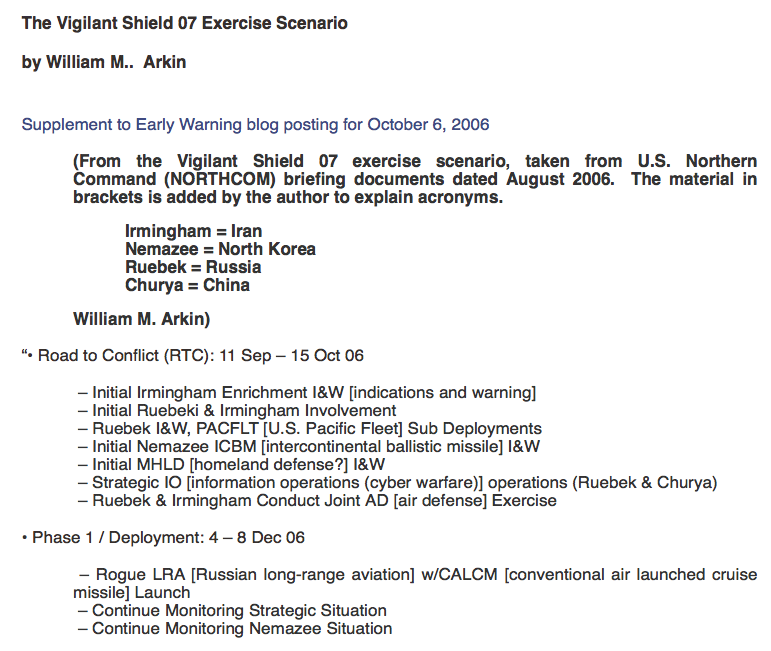
Screenshot: Excerpt from article in Global Research, original in WP no longer available
Now, to summarize, if we’re looking at a chronology of what’s going to happen, I think that the next step in this military agenda is not Russia but it is Iran. It would involve, of course, America’s various allies in the Middle East. Of course, NATO is involved but here we have major actors Israel, Turkey and Saudi Arabia, and in effect, if we look at the Syrian war theater we see that these various actors are already there. Iran is assisting the Syrian government forces and so is Russia, and Turkey and Saudi Arabia are assisting the terrorists in liaison with the United States. So from my understanding we might say that Word War III has already commenced.
But as far as the roadmap, the World War III roadmap is concerned, I think that the next stage is Iran. And notice that the United States is not actually threatening Iran at this particular juncture. Well, one can’t say at the same time that there’s been normalization since the agreement on nuclear energy, but if we’re looking at where the threats are most visible from the propaganda point of view, it’s in Eastern Europe and the Baltic states.
What I’m saying essentially is that this massive deployment of military hardware is not there for military purposes; it’s there for propaganda purposes. It’s there to intimidate, and it’s also there to intimidate the Russian people. But the Russian military planners are not so stupid. They know that when a war is being planned it’s usually a secret operation, and they also have their own intelligence services that are indicating to them as to what the next step of this war is going to be, and the next step of this war is in the Middle East and not in Western Europe.
Bonnie Faulkner: Well, Michel, you have just pointed out that history tells us that war plans are based on deceit but that in the case of Anaconda 2016, these deployments in Eastern Europe and the Baltics are public, and that their main goal is to “essentially to give leeway to the United States to wage its wars in other regions of the world, particularly in the Middle East.” How large are these military drills in Poland?
Michel Chossudovsky: We’re talking about very substantial deployments of military hardware with a large number of countries which are participating in these war games, and from that point of view it’s symbolic. But in effect, this has been the ploy. It’s essentially to intimidate and it doesn’t signify that this is going to result in an actual confrontation with the Russian Federation, which from the point of view of NATO would be absolute suicide because the Russian Federation’s conventional forces are very advanced and so are their strategic capabilities, so they’re not really going to – unless somebody makes some stupid mistake.
And I should mention that mistakes are often the cause of war. It’s not necessarily logistics and geopolitics and so on. We’re dealing with a military planning process which is very sophisticated, which is very intricate in terms of networks. We have to look at US Strategic Command in Omaha, Nebraska, which coordinates. Then you have the command structures. Then you have your allies. Then you have your air defense system. Israel’s air defense system is integrated into that of the United States and NATO. There’s a very structured decision-making process with many different actors. But it is also under those circumstances that errors occur, and some of the errors will occur because the decision-makers believe their own propaganda. I’ll give you an example.
 For instance, now the US Senate in 2002 – so it goes back. It’s a post-9/11 decision, when Rumsfeld was Secretary of Defense. At that time, and it’s not known to the public, nuclear weapons were reclassified and they can be used in the conventional war theater without the green light from the commander-in-chief, namely the president of the United States. And this applied to a category of weapons which are called mini-nukes, but they have an explosive capacity between one-third and six times the Hiroshima bomb. They’re deployed in Western Europe, Turkey has them, several allies of the United States who are non-nuclear states have them and they’re deployed against Iran, but also against the Russian Federation, and they can be used on a pre-emptive basis, in other words, for self-defense, without approval at the highest level of government. They are categorized as harmless to the surrounding civilian population because the explosion is underground, so to speak.
For instance, now the US Senate in 2002 – so it goes back. It’s a post-9/11 decision, when Rumsfeld was Secretary of Defense. At that time, and it’s not known to the public, nuclear weapons were reclassified and they can be used in the conventional war theater without the green light from the commander-in-chief, namely the president of the United States. And this applied to a category of weapons which are called mini-nukes, but they have an explosive capacity between one-third and six times the Hiroshima bomb. They’re deployed in Western Europe, Turkey has them, several allies of the United States who are non-nuclear states have them and they’re deployed against Iran, but also against the Russian Federation, and they can be used on a pre-emptive basis, in other words, for self-defense, without approval at the highest level of government. They are categorized as harmless to the surrounding civilian population because the explosion is underground, so to speak.
This is now written up in the military manuals. So if a three-star general in let’s say Central Command in the Middle East is going to follow the military manual and he says, “Oh, the bunker buster B61-12 tactical nuclear weapon is harmless to civilians. Let’s go ahead and use it.” So what I’m saying is people believe their propaganda, and particularly people like Hillary Clinton and Donald Trump believe their own propaganda. Hillary Clinton has made the statement that nuclear weapons are on the table, and she has intimated that Iran would be “obliterated.” I’m using the same words as Hillary Clinton. And so mistakes combined with stupidity, paranoia and ignorance.
There are two types of mistakes.
There are those which are dependent on technical or logistical errors, namely a nuclear weapon might be sent off by mistake due to some technical weaknesses, and there’ve been many cases of this nearly happening, which have been amply documented.
But there are other types of so-called mistakes which have to do with political paranoia, and stupidity and ignorance of officials in high office, and that we have to be very careful.
Can we trust somebody like Hillary Clinton or Donald Trump to make seasoned and wise decisions not only on behalf of the United States but on behalf of the world, because we’re talking about World War III. And from their statements, I’d say we have to be very careful. These people are very dangerous. They should not accede to the highest office of the land, namely presidency of the United States of America.
Bonnie Faulkner: Michel, according to your analysis, the next phase of this global war is Iran and the Middle East, not Russia, and that the build-up in Europe serves that purpose. What is the evidence for that?
Michel Chossudovsky: Well, the evidence is really very much based on statements and war plans and timelines which have been released by the Pentagon. We can refer to Wesley Clark’s famous statement of seven countries in five years, where he lists – it’s based on testimony from a Pentagon official where he actually says that seven countries in five years and these are the countries.
Now, I can tell you that back in the ‘90s already, Central Command headquarters had identified their enemies, and that was well before the Iraq war. Back in the mid-90s, let’s say, the Gulf War had already been implemented, in ’91. But what this Central Command document says is textually, first Iraq, then Iran. The rationale was to ensure unimpeded access to Middle East oil, so it’s part of the battle for oil. And it’s also part of a battle to prevent competing powers from having alliances in the Middle East with countries like Iraq and Iran. And so it really is the hegemony of the Anglo-American oil companies, which is sought.
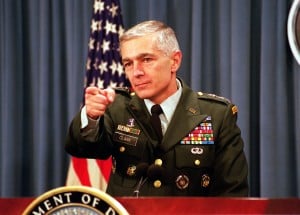 Now, to get back to general Wesley Clark, who is currently a retired four-star Army general who was Supreme Allied Commander of NATO during the 1999 war in Yugoslavia. What he says, and he’s quoting a Pentagon official with whom he had a conversation when I think he was still serving – this goes back to a statement made in 2007 and the quote is, “We’re going to take out seven countries in five years starting with Iraq and then Syria, Lebanon, Libya, Somalia, Sudan and finishing up with Iran.”
Now, to get back to general Wesley Clark, who is currently a retired four-star Army general who was Supreme Allied Commander of NATO during the 1999 war in Yugoslavia. What he says, and he’s quoting a Pentagon official with whom he had a conversation when I think he was still serving – this goes back to a statement made in 2007 and the quote is, “We’re going to take out seven countries in five years starting with Iraq and then Syria, Lebanon, Libya, Somalia, Sudan and finishing up with Iran.”
Now, we can see that several of those countries have already been invaded, including, of course, Syria, Lebanon, Libya, Somalia – well, in fact, all of them except Iran. If we go by the testimony of General Wesley Clark, the next country which has not been attacked by the United States and its allies is Iran. All the others have, in one form or another. And of course, we still have Yemen, which is not in the list, but we now have an extended war theater in the Middle East. We started out with Iraq and, of course, we have Afghanistan which is pretty much sort of at the other end. It’s not really part of the Middle East from a geographic, geopolitical point of view, but it’s Central Asia. So Central Asia and the Middle East is the broader region.
And what we have seen since the US-led war in Afghanistan, both the earlier as well as the subsequent attacks in 2001, is a road map which has extended, which has led to escalation – Afghanistan in 2001, Iraq in 2003 and of course, then you have Syria and Libya in 2011 and then you have Yemen and then, of course, you also have the drone attacks in Pakistan. It’s not a declared war but it’s still a war against a sovereign nation. It’s drone attacks within Pakistan’s territory and is an act of aggression.
So ultimately what’s building up is military escalation extending from the eastern Mediterranean and the Maghreb all the way through to Afghanistan and Pakistan and bear in mind that Afghanistan has a border with China, so we’re extending this regional war right to the western frontier of the People’s Republic of China. I should also mention that in China and in the Xinjiang Uyghur autonomous region there are al Qaeda affiliated groups which are supported covertly by Pakistani intelligence in liaison with the CIA.
So that is the perspective and I think that there’s been a lot of analysis with regard to Iran to the extent that the Syrian war, in a sense, is part of the roadmap. As some analysts have underscored, the road to Tehran goes through Damascus, and consequently, the outcome of the Syrian war is crucial in defining the next stage of this broader Middle East agenda, which essentially consists in breaking up countries, establishing spheres of influence, transforming countries into territories. It’s not necessarily to win the war militarily, but you destroy Libya, you destroy Iraq, you undermine the institutions and you create territories, and these territories of course have tremendous resources, particularly in oil.
Islamophobia
And then you wage a demonization campaign against the Muslims, and it just so happens that Muslim countries have approximately between 60 and 70% of the world’s reserves of crude oil. I’m not talking about the other forms of oil such as tar sands. And if those countries had been inhabited by Buddhists, we would be demonizing the Buddhists but we are now demonizing the inhabitants of the countries that we want to conquer, which have tremendous resources in terms of oil.
And then, of course, there are other actions taken in Sub-Saharan Africa against Nigeria, for instance, with Boko Haram. Boko Haram is known to be an asset as well, linked up to the al Qaeda affiliated organizations which are CIA-sponsored. So that is the nature of the broader war. It’s an extension of this military agenda within the Middle East, the breakup of countries, the establishment of new borders. It’s what some US military analysts call the New Middle East.
Bonnie Faulkner: You’ve mentioned oil as an objective of these Middle Eastern wars, but what is the overall objective of all of these wars in the Middle East? Is it part of the Oded Yinon plan for Greater Israel?
Michel Chossudovsky: Well, I think the Greater Israel plan can be used by the United States and NATO as an instrument of conquest. I think, from my standpoint, Israel is not a partner in the same way as the other Western powers are partners with the United States. It’s a small country. It has certainly very important capabilities and it’s very much dependent on US military aid, but it serves a geopolitical purpose in the Middle East. In the pursuit of conquest in the Middle East, Israel is absolutely, of course, essential.
I recall that going back to the 2000s – I can’t recall. It was at least ten years ago. It was during the Bush administration. Dick Cheney intimated that Israel might do the work for us, and he was talking about the bombing of Iran. And I think that’s still the case, that Israel would be an instrument on behalf of the United States and NATO. In other words, we see this pattern of the United States using its allies to do the dirty work. Well, Israel would do the dirty work and in exchange for that they would get Greater Israel, or at least they’d be able to expand their territory.
Certainly the policies of the Netanyahu government are in fact geared towards that. It’s ultimately the appropriation of Palestinian lands, the ultimate policy of genocide and exodus of the Palestinians from their homeland. That is part of it. And it’s being used as a mechanism to incite this broadening of the Middle East conflict, so that you have Israel and you have Turkey and Saudi Arabia. I think these are the three countries which are starting to play a major role in the Middle East war.
And I should mention that they also have very important bilateral relations. Turkey and Israel have an agreement which goes back some 20, 30 years, goes back to the ‘90s. Namely, it’s a relationship of cooperation in military and intelligence, in defense production, in intelligence, very close bilateral relations, and there may be ups and downs in that relationship but it is still standing. Israel is also building bilateral relations with Saudi Arabia. So these countries are going to be used. And I should mention that both Turkey and Israel have territorial – they have certain plans to extend their territory. We see it with Turkey at this very moment. Their plan is to annex a portion of, in other words, the northern part of Syria and similarly Israel wants to extend its territory.
So these partners are playing a key role, but ultimately they are subordinate to the Pentagon. They don’t call the shots. They don’t call the shots. They may call the shots in some regards, but broadly, from a broad military planning point of view, they are integrated within US Pentagon and NATO decision-making processes, and I should say that NATO is dominated by United States. I think that’s the background. It’s not to say that the plan of Greater Israel is the objective of this war, but in fact it’s a byproduct of this war, and it is very useful for the Western military alliance to use it with a view to reaching its broader objective, which is to recolonize, so to speak, the Middle East and Central Asian regions.
Once Iran – at least from the point of view of military planners, I’m not suggesting it’s going to happen – but once Iran implements some form of regime change and succumbs to the powers of NATO and the United States, this changes the geopolitical balance. Because, as I mentioned, there are four countries which are identified and they’re also identified in war games scenarios, which are considered to be on the target list. Those are Russia, China, Iran and North Korea.
I think the other dimension, which is absolutely crucial, is that the structure of military alliances is also an instrument of conquest. We’ve seen it in all previous major world conflicts. In World War I, the Triple Alliance and the Triple Entente – the shift in the structure of alliances was ultimately decided in the onslaught of World War I. And similarly in World War II, the alliances of the Axis with Italy and also subsequently with Japan.
But in this particular context, in the context of global warfare, the major thrust of the United States has been to weaken the strategic relationship between Russia and China, and they’ve been doing that for quite some time. The signing of the Shanghai Cooperation Agreement in 1972 with Kissinger and, of course, Richard Nixon who negotiated that, was a preamble to the restoration of capitalism in China. Deng Xiaoping, who was ultimately serving US interests and who was very much anti-Soviet at the time, that would sort of bring China into the orbit of the Western military alliance. And, of course, China is integrated as an industrial economy into producing made-in-China. The United States is the biggest market for China.
So there’s a cross-cutting alliance there. China is allied with Russia but at the same time China has extensive trade agreements with the United States. It has a bilateral agreement that was signed in 2001 which was prior to its entry into the World Trade Organization, which allows for US banks and Western banks to enter into the Chinese financial landscape. And so they’re all there: Goldman Sachs, JP Morgan Chase, Citigroup – they all have their subsidiaries there. They even have access to domestic banking, which was provided to them, and in that regard we can’t simply say that China is a firm ally of the Russian Federation. It may be at a certain level in military and strategic affairs, but from an economic standpoint we cannot ignore the fact that the United States has very close bilateral relations with the People’s Republic of China.
Bonnie Faulkner: You have said that the United States wants to break the strategic alliance between Russia and China by co-opting China. How, in your opinion, does the US propose to achieve breaking this alliance?
Michel Chossudovsky: Well, I’m not clear as to whether the United States is undertaking this in the right way because, in effect, in recent years they have been threatening China with regard to its territorial waters. The relationship is quite aggressive, at least from the military strategic point of view. But as I mentioned, the economic relations are relatively good, and there are people within the leadership which are very pro-American.
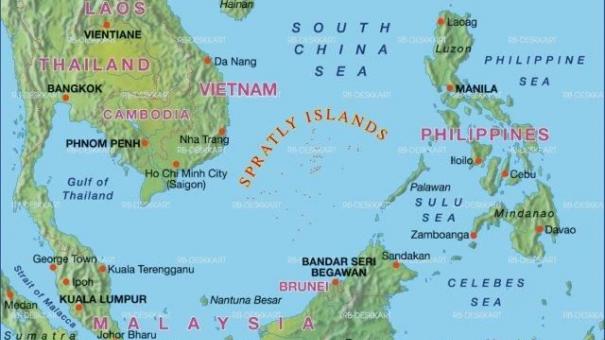
South China Sea
I’ve experienced this on recent trips to China, when I addressed the Chinese Academy of Social Sciences and I pointed out the fact that China’s borders were surrounded with US military facilities and that they were being threatened, but that was a couple of years back. The reaction was rather negative. They said, “Well, no. We have good relations with the United States,” and they essentially accused me. They took the side of the United States and said, “Professor, you have given us a left-leaning perspective.”
But that’s just to indicate that the people in government and people in the universities and the think tanks in China tend to be pro-American. On the other hand, people in the military are on the whole anti-American. So there’s a situation which I would describe as, well, it’s contradictory but you have cross-cutting alliances. On the one hand, Russia and China have a strategic alliance under the Shanghai Cooperation Organization. On the other hand, the United States has trade and investment alliance with China, which is extensive due to the volume of that trade.
And bear in mind another important factor is that these countries are now capitalist countries. So they’re not upholding an alternative economic system as in the heyday of the Cold War. There’s no more so-called socialism in the People’s Republic of China or in the Russian Federation and in fact, quite the opposite. China is certainly not a model of social democracy by any means. It’s the most oppressive form of capitalism one can possibly imagine, with sweat labor conditions extending to millions of people, with 275 million migrant workers, and those are official figures, who are integrated into a cheap-labor economy and that in turn feeds the Western consumer economy. We have to understand that. So there are very important vested interests on both sides to maintain that relationship.
And the Chinese government is in fact also responding to the interests of the Chinese capitalist class, to the traders and so on forth. But what is distinct to China is they do not have – at least at this particular juncture they do not have an imperial agenda. So when they send their companies to Libya or to other countries in Sub-Saharan Africa they’re essentially there to make money. They don’t come in with a Chinese integrated command, which is going to protect their investments. That’s the US model. US AFRICOM is there essentially to recolonize Africa. And of course, when the Chinese come into Africa, they’re not within their own sphere of influence. They’re within the sphere of influence which is essentially Western, and this is something, of course, which is feared by the United States and its allies.
Bonnie Faulkner: You have recently been talking about global warfare in several regions of the world. First of all, what do you mean by global warfare, and in that context, could you talk at more length about what you refer to as non-conventional warfare? You mentioned this in the beginning and I was wondering if you could elaborate a little bit on that.
Michel Chossudovsky: Well, global warfare is a project defined at the level of US foreign policy but also in terms of US military doctrine. It is also reflected by the fact that the United States has military bases and facilities all over the world. It has its regional command structures – I can’t give you the exact numbers from memory but we’re talking about military bases in over 100 countries and deployment worldwide, not to mention the star wars, the high-tech dimensions, which make it global, that they can strike anywhere in the world within very short notice.
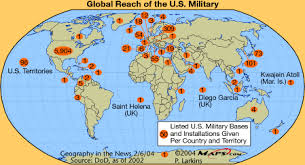
So that is what is meant by global warfare. It has to do with the organizational structures of the military on the one hand. It has to do with the fact that we’re dealing with a globalized economy which is protected by military intelligence operations, and it has to do with the weapons systems of long-range missiles and so on and so forth, but also other methods of intervention, as I mentioned, the so-called environmental modification techniques, climatic warfare and so on, is very vast. And of course, the communications system that we have worldwide, the surveillance system, the satellite technologies. So that is what is meant by global warfare.
It’s a very scary context because, first of all, public opinion may have some understanding of some dimensions of this particular framework but they are not aware of the sort of global implications. And I should say that within the realm of decision-making, even the decision-makers are not entirely aware of the global ramifications of their actions, and that’s why I also stress the fact that there’s an historical role of mistakes and errors and human factors, paranoia and so on so forth, which can insert itself within the framework of decision-making.
In other words, we are certainly at perhaps the most serious crossroads in world history. It’s the dangers of a third world war. It’s certainly looming. I don’t think we should neglect that, and I’m not suggesting it will take place. What we have to do is to formulate strategies which will enable us to undermine this agenda when Hillary Clinton says that “Nuclear war is on the table. I want Iranians to know if I’m the president we will attack Iran. We will obliterate them.” That’s what she said, and it was part of her previous election campaign, but nonetheless she made that statement, and she’s made other statements.
Now, what we’re dealing with is in fact the outright criminalization of politics and then there’s a question of sanity and honesty in US foreign policy. Well, there is no sanity and there is no honesty and if you want to be president of the United States you almost have to have some kind of a criminal record. Otherwise, you’re not going to be elected or you’re not going to be supported by the lobby groups. And why is that? Because people who have very fraudulent backgrounds, such as Hillary Clinton, are easily manipulated. In fact, we noticed that many of the regime changes are precisely that.
Now, you raise the issue of conventional warfare. The non-conventional warfare forms of intervention are part of that agenda, so that when you have a regime change in Brazil or in Argentina or in Venezuela, it’s part of that agenda. The mechanisms may not be military but they’re certainly intelligence and they also have an economic dimension.
Bonnie Faulkner: Russia is taking NATO’s saber-rattling in Eastern Europe very seriously and has said that it will do whatever it takes to secure Russia’s borders. The launching of the European missile defense system, Aegis, by the United States in May has repeatedly been criticized by Russia as an attempt by the US to perhaps be able to pre-emptively strike Russia. Now, Russia has deployed an Iskander missile system, which would be in response to this Aegis system. What is your view of Russia’s military capabilities?
Michel Chossudovsky: This Iskander – it’s called the SS-26 Stone Tactical Missile System – has been around for quite some time. I don’t think that we are necessarily in an entirely new environment (see image below). Russia has, or at least claims to have, the capabilities of confronting any kind of so-called missile defense system, which in effect is a system of attack missiles. But I think certainly Russia is concerned, rightly concerned, first of all, regarding the military buildup even though that doesn’t necessarily signify outright war, but of course, it could lead to incidents. And it has sent a message to the West that it intends to protect its borders and its territories and it is not intent upon any kind of negotiation, e.g., with regard to Ukraine or with regard to Crimea.
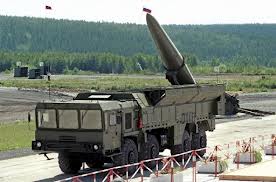
And at the same time, it has demonstrated to the West, particularly since its intervention in Syria, that it has very advanced aerospace capabilities, which would respond if US-NATO were to attack the Russian Federation.
But if this were to occur we are in a World War III scenario – particularly in view of the fact that the diplomatic relationship which existed during the Cold War is no longer there. During the Cold War there was the hotline, there was dialogue, there were persistent exchanges between the West and the East. We don’t have that anymore. And we also have a different leadership. When we’ve got heads of state and heads of government who are bordering onto paranoia, and I’m talking about not only in the United States but also in Western Europe, so that the situation is potentially dangerous.
But as I underscored, I don’t think that this buildup is intended to attack Russia on its western frontier. It’s more an issue of threatening Russia and using these threats to force Russia into making concessions to the West, or accepting the West’s hegemony.
And I think that US policymakers must understand that Russia will never do that. They have fought several wars, starting with Napoleon, then World War I and then World War II, and in World War II they lost ten percent of their population defending their homeland. So there is absolutely no feasible possibility that the United States and its allies could actually conquer this vast country.
But again, within the realm of non-conventional warfare they could certainly destabilize the Russian economy. They could create divisions – or they have, in fact, been creating divisions within the Russian Federation. And we have to look at the map. Russia and China and the various republics of the former Soviet Union, which still have alliances with the Russian Federation—it’s a mass. It extends from Eastern Europe right to the Far East, and that is, of course, the area which is sought for conquest. You can read the text of Zbigniew Brzezinski with regard to US foreign policy. In fact, Zbigniew Brzezinski’s most recent proposal is to weaken the relationship between China and Russia, and in fact, they’re doing that. If that relationship were to crumble for some reason, I think that then Russia would be very much isolated and much more vulnerable to US endeavors in terms of military conquest and so on.
But I should mention there’s another important thing. It is that the Russians are playing a very careful diplomacy. They are establishing bilateral relations with some of America’s staunchest allies, including Israel and Saudi Arabia, and they are attempting to maintain their relationship with their partners in western Europe, particularly Germany and France. That, I think, is very significant. This global military agenda and this global economic agenda with its concurrent trade agreements, the TTIP and the TPP, which essentially establish the contours of a colonial economic system, it’s an imperial project. The trade agreements are part of the imperial project.
At the same time, there’s a lot of resistance to that within the European Union and there are also historical ties of Western Europe to Russia, which go back several centuries, and this is not something you can necessarily erase just with a stroke of US foreign policy.
So the Russians are very astute diplomats and they are also very experienced in strategic and military affairs, and that’s something which US decision-makers have to take into account because if they don’t, they are in fact precipitating the world into the unthinkable World War III scenario, which in a real sense of the world, threatens the future of humanity. The stakes, stupidity, lack of judgment in the implementation of a so-called imperial design, could certainly lead the world into a global conflict.
Bonnie Faulkner: Michel Chossudovsky, thank you very much.
Michel Chossudovsky: Well, thank you for a very constructive analytical discussion. Delighted to be on the program.
I’ve been speaking with Michel Chossudovsky. Today’s show has been Global Warfare – Is the US-NATO Going to Attack Russia? Michel Chossudovsky is the founder, director and editor for the Centre for Research on Globalization based in Montreal, Quebec. The Global Research website, GlobalResearch.ca, publishes news articles, commentary, background research and analysis. Michel Chossudovsky is the author of 11 books including The Globalization of Poverty and the New World Order, War and Globalization: The Truth Behind September 11th, America’s War on Terrorism, as well as co-editor of the anthology, The Global Economic Crisis: The Great Depression of the 21st Century. All books are available at GlobalResearch.ca.
Guns and Butter is produced by Bonnie Faulkner, Yarrow Mahko and Tony Rango. Visit us at gunsandbutter.org to listen to past programs, comment on shows, or join our email list to receive our newsletter that includes recent shows and updates. Email us at [email protected]. Follow us on Twitter at gandbradio.
This transcript is a project of globalresearch.ca and gunsandbutter.org.




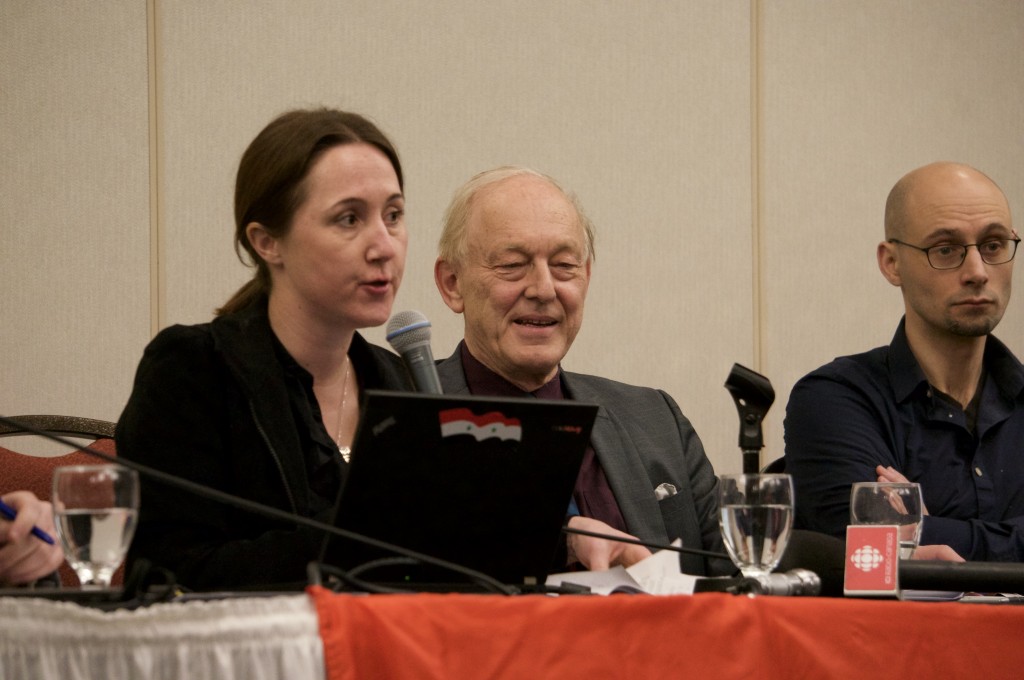


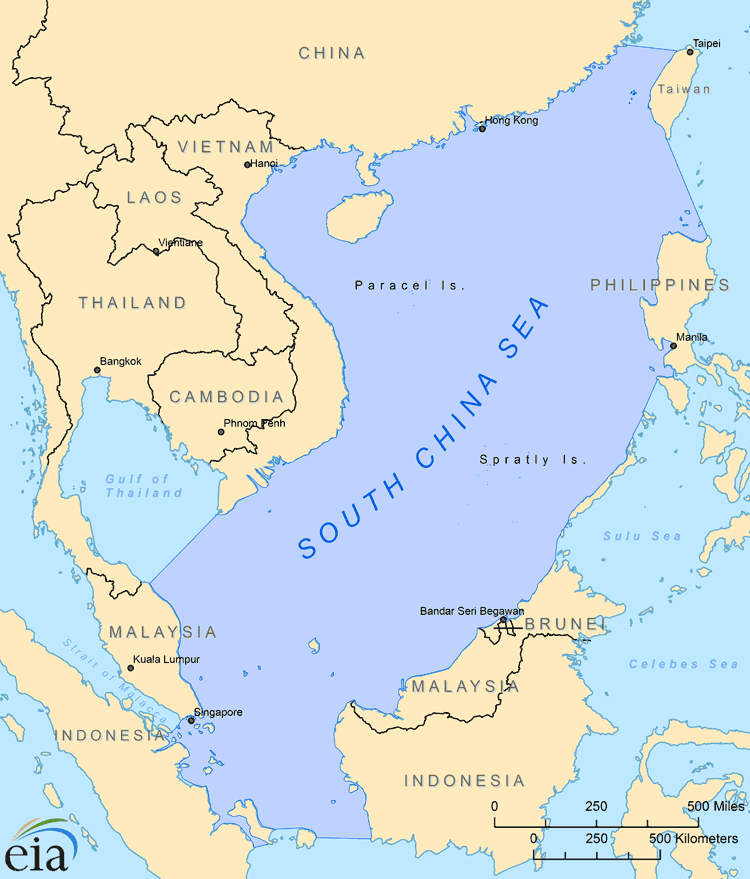



















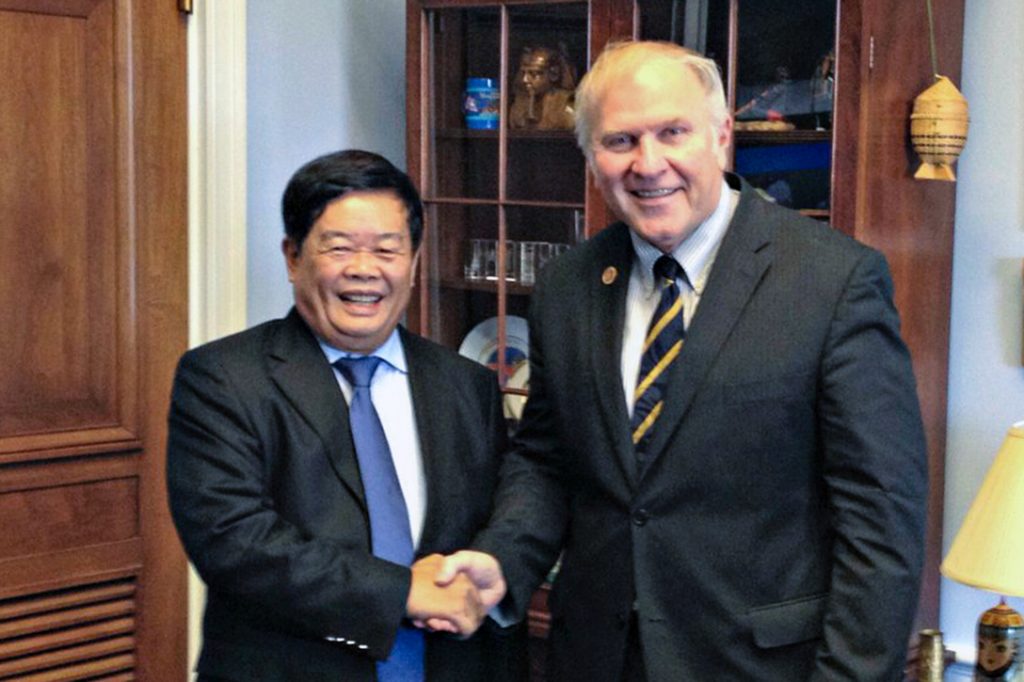

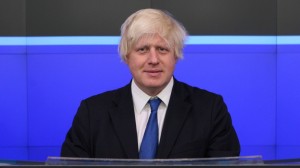



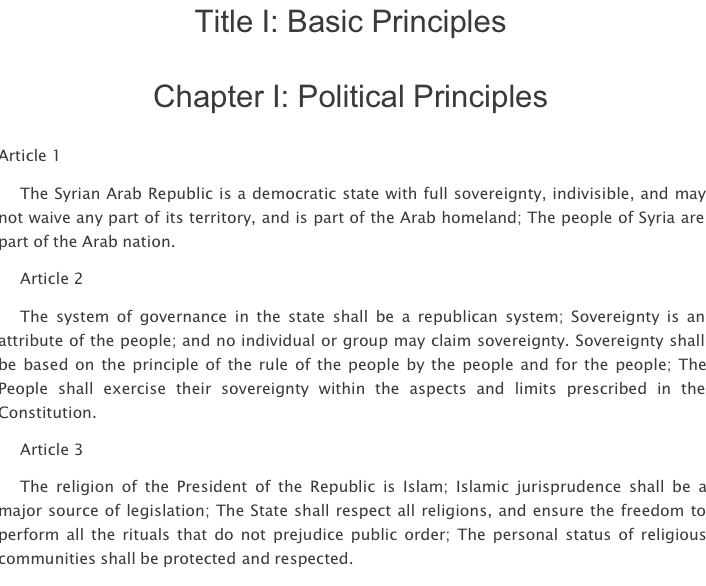

































 Michel Chossudovsky contributed to this report
Michel Chossudovsky contributed to this report






































